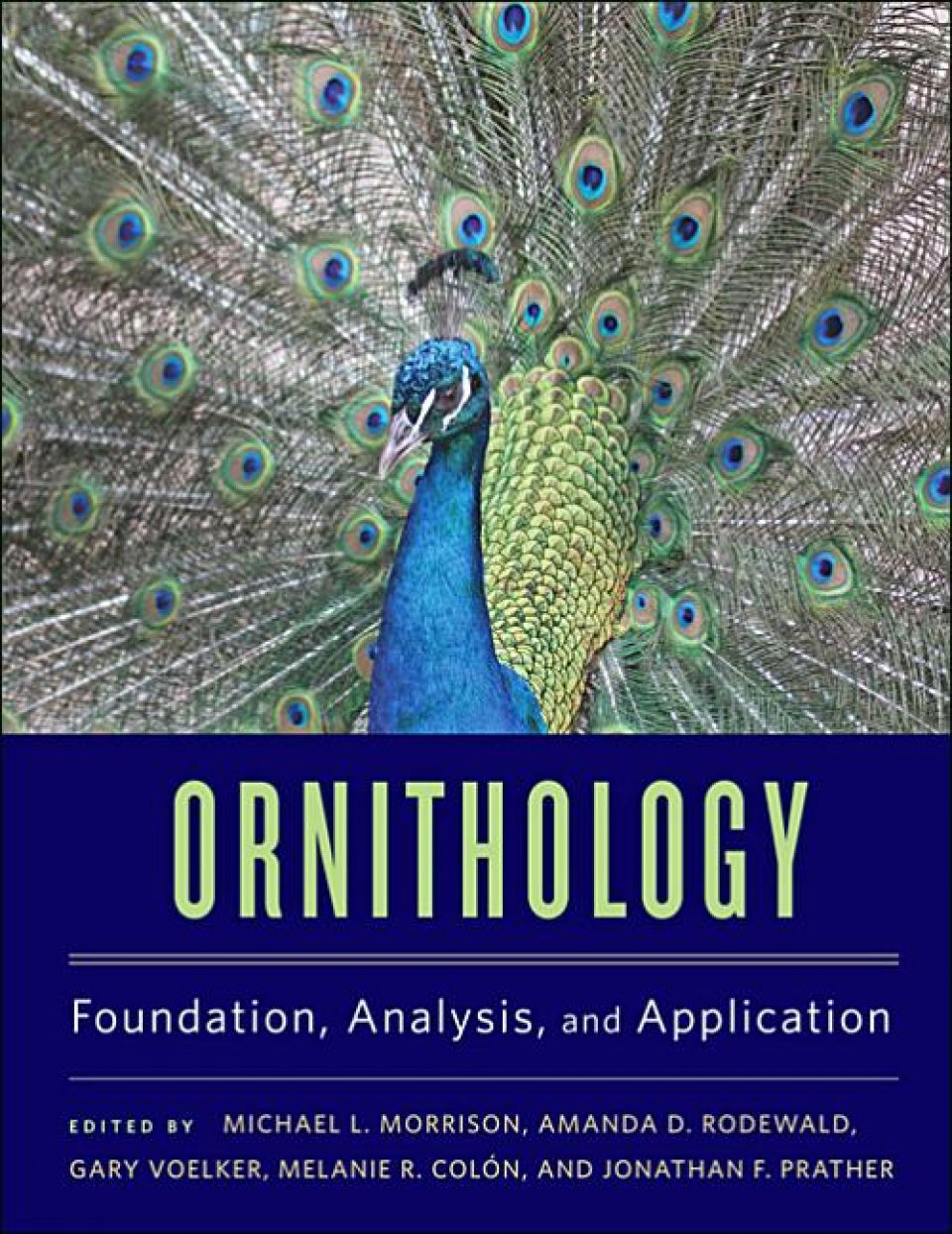Ornithology: Foundation, Analysis and Application

- Ornithology: Foundation, Analysis and Application by Michael L Morrison, Amanda D Rodewald, Gary Voelker, Melanie R Colon, and Jonathan F Prather (Johns Hopkins University Press, Baltimore, 2018).
- 1,016 pages, 730 colour illustrations, 206 line drawings.
- ISBN 9781421424712. Hbk, £73.35.
This is an impressively large book, weighing some 3.8 kg, and comprising 31 chapters written by around 60 different authors, many of whom are experts in their respective field.
The coverage is enormous, and it would take too much space to mention the complete list of chapter topics here, but they are all pretty much what one would expect for a book that aims to review the entire span of ornithology. There are also a few unexpected and interesting topics, such as 'Pathways (careers) in ornithology' (ch 30) and 'Fundamental methods' (including note-taking, molecular methods and museum studies). The many colour photographs enhance the attractiveness of the volume.
Directed primarily at students: undergraduates and graduates undertaking courses in ornithology, this is a book of which the editors say: "each chapter provides a window into the dynamic field of ornithology that can serve as a starting point from which topics can be more deeply explored." The editors also state that the book is written for "professionals who are experts in one or a few subject areas … and want to strengthen their understanding of others". Fortunately, the publishers have resisted the temptation to say that this is also a book for birders: it isn't.
Single-author books, such as Frank Gill's Ornithology (various editions, including a new one next year) benefit enormously in terms of readability and balance, but the amount of information on birds is now so great that some publishers feel that it is easier to employ a team of editors. Even so, a volume of this size and covering this much ground is still a monumental challenge and succeeds best when the editors themselves are experts and know their authors both personally and professionally. This helps to ensure that each chapter comprises a broad, truly objective overview of the topic in question. One of the editors' roles includes making sure that their authors do not, as some seem to have done here, use it as an opportunity to promote mainly their own views.
When reviewing a book like this it is inevitable that one looks at those areas one knows best to check whether the treatment seems comprehensive, even and up to date. While much of it is, I also spotted some notable gaps. The chapter on reproduction entitled 'From fertilisation to independence', for example, includes no mention of the extraordinary physiological polyspermy that characterises avian fertilisation.
The ornithology student market is a big one in North America, but curiously not in the UK where there is no strong tradition of teaching bird studies. Instead, academics here teach broader topics such as ecology, behaviour and evolution that include birds as examples. I suspect that many students studying ornithology in North America will be impressed by this attractive, bulky volume and use it on their courses.

